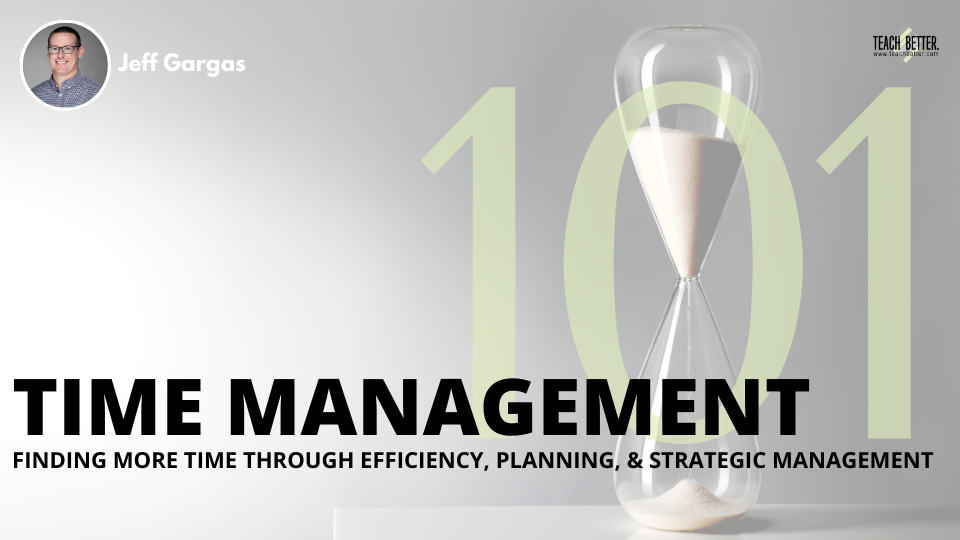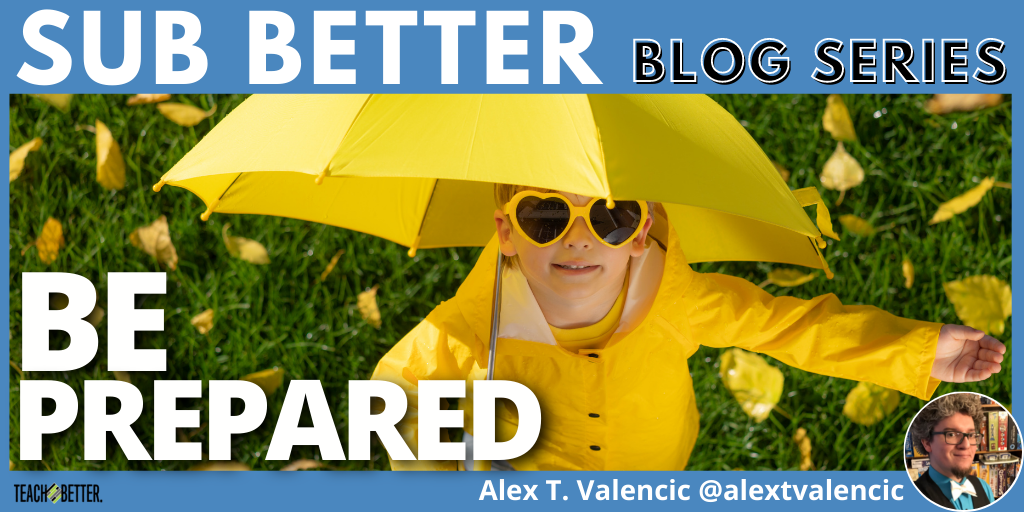TL;DR:
- It isn’t enough to just have more substitutes; we need better substitutes.
- Substitutes, teachers, and administrators can all work to be better prepared.
The Case for Better Subs
Substitute teacher. Guest teacher. Sub. Whatever you call them or know them as, they are a crucial part of the education system. This year especially, as the world continues to grapple with an ongoing global pandemic, teacher shortages, and a decrease in the substitute teaching pool, everyone seems to be desperate to find ways to recruit and retain substitutes. I have yet to meet a teacher or administrator who has not experienced the frustration of not having enough substitutes to meet the demands of teacher absences. I admire those who have found creative solutions to recruiting more substitutes, such as increasing pay for high-needs buildings, calling in retired staff, or compensating regular teaching staff for filling in during plan times.
But is it enough to simply have more available bodies? I would argue, “No.” We don’t just need more subs, we need better subs. And that means we need to know how to sub better.
I don’t have all the answers. However, I can draw from my experiences of working as a substitute teacher for three years, covering all grade levels from early childhood to advanced placement high school calculus, in rural and urban settings. This series is an attempt to share some of my tips and tricks for substitutes, classroom teachers, and administrators to improve the substitute experience for our most important stakeholders: our students.
So, are you ready to sub better?
Let’s get started!
As a youth, I was a member of the Boy Scouts of America, going through the ranks from Bobcat to Eagle Scout. “Be Prepared” is the Boy Scout motto. And I cannot think of a better way to start this series than by talking about what it means to be prepared as and for a substitute teacher!
Prepare your class for your first absence. One way you can do this is by planning an absence where you will be there. How do you do that? Sub for yourself! Click To TweetFor Substitutes
Whether it is your first substitute teaching assignment or your fiftieth, being prepared starts with knowing how to dress. I will never forget the time I accepted a substitute teaching assignment for a building and showed up in my typical (at the time) work attire: white shirt, tie, slacks, thin black socks, shiny dress shoes. The assignment?
Elementary P.E. teacher.
Oops. I made it through that day. But it would have been a much more successful day for me and the students I was serving if I had been dressed appropriately: sneakers, comfortable cotton socks, jeans or khakis, and a polo shirt. It also would have helped if I had brought a whistle!
Know what to wear. Check the school’s website for a staff handbook and see if it has a dress code. If there isn’t one listed, contact the school. (The front office assistants will become some of your best friends!) Dress comfortably, but also dress professionally. Students need to know when they walk in that the stranger in the room is a competent professional ready for the day. And their first impressions will make a huge difference.
For Teachers
If at all possible, prepare your class for your first absence. One way you can do this is by planning an absence where you will be there. How do you do that? Sub for yourself!
I did this one year as a classroom teacher. I had had a planned absence to participate in district work. Then, I got a call that morning that no substitute teacher was available for me, so I needed to report for duty. Since I had already told my class that I was going to be gone that day, I decided there was no reason for that to change simply because I was going to be there.
Here is how I started the day after my students walked in, somewhat confused to see me at the door:
Good morning! My name is Mr. Valencic and I am your substitute teacher for today! I believe that your teacher, Mr. Valencic, told you that he would be gone today, so none of you should be surprised to see that I am here instead of him! To start off, I thought I’d tell you a little bit about myself. Like I said, my name is Mr. Valencic. I know that my name can be a bit challenging to remember, though, so if you prefer, you may call me Mr. V or just “Sir.” You may not call me, “hey you,” “Mr. Teacher Dude,” “dude,” “bro,” or “you-with-the-curly-hair.” You may call me Mr. Valencic, Mr. V., or Sir. I, in turn, will do my best to use your names, but I may also call you “Sir” or “Ma’am” as a title of respect, just as I expect you to respect me.
I have some plans here that your teacher, Mr. Valencic, left for me. I see that he says that you should have done journal writing this morning and that we have P.E. later this morning. I am going to do my best to follow his plans as best as I can. If he says that you are supposed to do something, then that is what he wants you to do. If he has not told me to do something, then you are not going to do it. It is really that simple. However, I want to point out that, as much as I know I may look and even sound like Mr. Valencic, I am not him! So if I do something different, that’s okay!
We are going to have an excellent day today! When you all go home at three o’clock, I hope that I will be able to leave your teacher a note letting him know how well everything went and telling him that I would be delighted to come back again anytime!
Certainly, students thought I had lost my mind, but they went along with it. And it gave them a safe space to practice having a guest teacher, even if that guest teacher was their regular teacher.
[scroll down to keep reading]
For Administrators
If this is going to be the first time the substitute teacher is going to be in your building, then give them a call or send them an email the day before to welcome them to your building. Share any expectations, especially about dress codes or other policies. Meet them in the office and walk them to the classroom. Make sure that the substitute has everything they need and promise to check in throughout the day.
Parting Thoughts
James Baker, former United States Secretary of State, famously declared, “proper preparation prevents poor performance.” I’ve shared some suggestions on what to do to prepare for that first impression students will have of their substitute teacher. Next month we will discuss ways to prepare for the second impression and beyond by building a substitute teacher’s toolkit!
About Alex T. Valencic
Alex Valencic is an educator, former small business owner, Boy Scout, volunteer drug prevention specialist, unrepentant bibliophile, and a geek of all things. He worked as a substitute teacher for three years before achieving his lifelong dream of teaching fourth grade, which he did for seven years in Urbana, Illinois, before accepting his current position as the Curriculum Coordinator for 21st Century Teaching and Learning in Freeport, Illinois, where he not only supports innovative educational practices in the classroom but also oversees social studies, science, and nearly all of the elective courses in the district.




